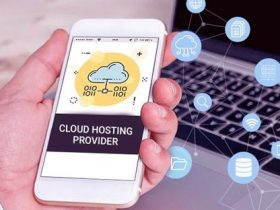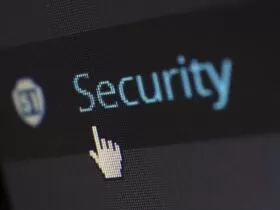Due to the quick shift towards remote working, IT teams have also cobbled together their work-from-home policies. Even so, securing business data regardless of locations, and strengthening productivity along with it is a difficult task.
Work from home environment comes up with a unique challenge of data security in comparison to the in-office one. For instance, when an employee is working at the office, they can be seen behind the layers of preventive security controls, thus, making it harder for anyone to make a security mistake while being present at the office. On the contrary, when employees work remotely, there can be possible chances of new risks arise for the company – indicating essential and strong additional security policies to implement.

Businesses expect these policies to be in relevance with data security and productivity as distributed or virtual office culture would represent a new normal in the coming future. At this time, we are more likely to see computers than ever connected to your company’s VPN (Virtual Private Network) connection but this, in turn, can potentially create a number of new home-office safety “back doors” that hackers could expose.
In such a situation, it’s vital to remind employees about your work from home security policies and ensuring staff follows them thoroughly. While they do that, you can emphasize creating solid strategies and have the right tools like VPN monitoring tool in place for streamlining remote work-flow.
Let’s move quickly to the tips through which you can secure crucial data during work-from-home!
Evaluate your VPN
Just because you require all remote employees to a VPN for accessing company data, that does not assure you that your VPN is secure and up-to-date. Hackers will actively seek out the opportunity to decode vulnerable endpoints, but the IT teams don’t take time to patch and update systems. VPN monitoring tool ensures that you have structures and network processes are streamlined to keep moving forward with entire network work-flow. Focus on other ways to make network security stronger like:
- Using an authentication method for login IDs and passwords
- Be sure of your employees updating passwords regularly
- Keep a strict check that employees use VPN when in need
- Ensure that your employees are logged on via security networks
- Train employees to configure their wireless routers and personal firewalls
The ultimate solution to the hindrances that organizations come across in a distributed office environment is to protect remote devices on large scale from becoming compromised and saving them from data breaches.
Update software regularly
Software updates are not an easy thing to deal with, and yet you keep delaying them. Several software developers often release updates related to the new features added, detecting bugs or any vulnerabilities. They would notify the users whenever there are new updates available, and even but if they don’t, it’s your organization’s duty to observe that employees are regularly updating software.
Any software running on employees’ systems can possess a degree of risk. Applications that are not accessed frequently by employees and not contributing to productivity should be removed to prevent any potential attack. Websites should also be detected through the tools like website blocking tools to deter the risk of data malfunctioning.
Encryption for data security
Sensitive company data must be protected by encryption that can immediately render it inaccessible to any user without access credentials. Having said that, there will be scenarios where encryption still isn’t enough to guarantee data security or In the circumstances like this, when the device is lost or stolen from a remote employee during an active session, login credentials can get compromised.
Organizations should have data protection software at their disposal to ensure data security remotely And when necessary, deleting data from devices in case of data breaches that could be exposed to the wrong hands. Employee screen monitoring software can help protect a company’s data by barring access to unauthorized users.
Enable two-factor authentication
Multi-factor authentication is an effective way to deter unwanted access from users not aligned on the task and websites. Enabling two-factor authentication (2FA) for each employee who would need to log-in to their user profile has to enter a code or password over their email or phone.
Using two-factor authentication protection is advantageous in case someone manages to guess the password but would find it hard to get the code. This method adds a layer to the data security process and confirms a user’s identity by first requiring their username and password or probably a PIN.
Wrapping up
While there are good technologies available like VPN monitoring tools and employee screen monitoring software that help the business, you must ensure that you have ticked all the boxes in your remote-work security checklist and prepared your employees regarding the same. VPN monitoring tools could be seen as a primary avenue of data security and protection.
The policies can be enforced with both technical and administrative controls, keeping your organizations’ data safe and making sure your business can still run even in the remote work environment. Let your employees come forward to ask questions regarding their system’s security and build a transparent remote-work environment.


























